Grounding Dengue and the Secret Fish-Eye UV View
We explore the secret messages that fish send in ultra-violet and a genetic trick to stop Dengue getting off the ground in this Naked Scientists NewsFlash. Plus, the giant shark munching through shellfish in cretaceous seas, and the alien star clusters invading our galaxy!
In this episode

00:13 - Fish use UV to spot the difference
Fish use UV to spot the difference
Healthy coral reefs come packed with colourful fish and a new study reveals that the some fish send out private messages using patterns of ultra violet light that us humans - and many other animals - can't see.
It can be very important for fish to tell the difference between different species, especially for damselfish. These feisty tiddlers defend their farms of seaweed from intruders, the worst kind being other members of the same species because they strongly compete for food and mates.
 Ulrike Siebeck from the University of Queensland in Australia led a team of researchers with the enviable task of studying two species of damselfish on the Great Barrier Reef. They discovered that Ambon damselfish, a small yellow fish, can read "secret" facial patterns of UV spots and stripes to tell one species from another.
Ulrike Siebeck from the University of Queensland in Australia led a team of researchers with the enviable task of studying two species of damselfish on the Great Barrier Reef. They discovered that Ambon damselfish, a small yellow fish, can read "secret" facial patterns of UV spots and stripes to tell one species from another.
The team presented wild Ambon damselfish with two other damselfish inside clear plastic tubes: one the same species, and the other a different species, the lemon damselfish that looks similar except for different UV facial patterns. Under normal light conditions, the Ambon damsels preferentially attacked other Ambons. But, when the tubes were made from UV-blocking plastic, the Ambons showed no preference for either fish, presumably because they could no longer see the UV patterns.
Also, in the laboratory, researchers trained the damselfish using food rewards to distinguish between drawings of the UV face patterns.
Together, these findings indicate that these Ambon damselfish can see intricate UV patterns and use them to recognize other fishes' faces.
UV makes an ideal secret signal because not many other fish can see it. With its short wavelength, UV light is easily scattered in water making it of little use for precision vision. And long-lived predators often protect their eyes from UV damage by screening out these wavelengths. This means the damselfish can communicate to each other, find mates, and warn each other to keep their distance without ruining their camouflage against predators.
Next, the team wants to delve deeper into the UV vision of various fish, to find out at what distance they can see, and whether they can perhaps distinguish not only between different species but also individual fish.
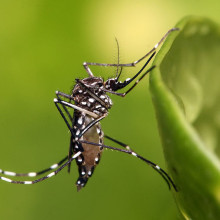
04:01 - Grounding Mosquitoes
Grounding Mosquitoes
Researchers in Oxford and California have found a way to 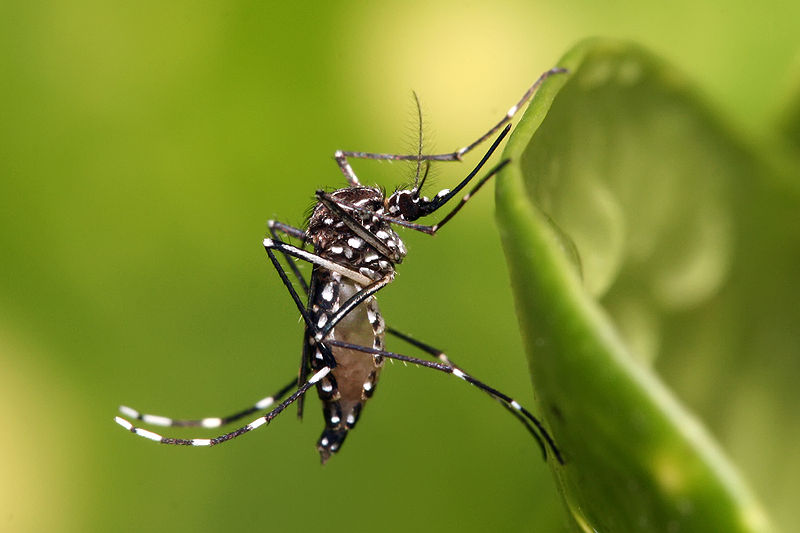 stop mosquitoes from growing wings, keeping them grounded and stopping the spread of diseases like dengue fever.
stop mosquitoes from growing wings, keeping them grounded and stopping the spread of diseases like dengue fever.
Writing in the journal PNAS, Luke Alphey and his colleagues highlight how controlling the principal dengue vector, the Aedes aegypti mosquito, could impact on the spead of the disease and its more severe manifestation, dengue haemorrhagic fever. Current vector control methods are simply not effective, and we're now facing an estimated 50-100million new dengue infections annually.
One promising method is to control the mosquito population by releasing sterile males, which reduces the population in the next generation. This is known as the Sterile Insect Technique, or SIT, and although it showed some promising results back in the 1970s, it's not being used in any large scale programmes. Another technique is to introduce a lethal or incapacitating trait into the females of the population; as it's the females who bite and spread disease, this is particularly appealing.
This new study is based on modifying the Aedes aegypti Actin-4 (AeAct-4) gene in such a way as to render the female mosquitoes flightless. This gene is active in the pupal stage of the female mosquito, predominantly in the insects' "indirect flight muscles". The researchers created a modified mosquito in which this gene is only expressed correctly when the drug tetracycline is administered; this is known as the "Tet-Off" system and means that, in the absence of tetracycline, these insects reach maturity but are unable to fly.
Allowing the insects to reach maturity unharmed is an important aspect. It means that the larvae can still develop and compete with other larvae, and then only the adult female - the one that causes all the problems - is affected. This also means that, rather than having to rear and release swarms of modified males, modified eggs can be released instead. And as the eggs can be stored and stockpiled, this should mean that any control programme can be kick-started with a much larger initial insect release.
Another advantage of this approach is that the males act as health carriers of the flightless condition, so when they mate with non-modified females, the the flightless mutation is passed on to the next generation.
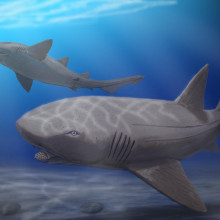
07:30 - Gigantic shellfish fiends discovered in Cretaceous seas
Gigantic shellfish fiends discovered in Cretaceous seas
New fossil evidence suggests there were gigantic sharks lurking in Cretaceous seas, around 90 million years ago, but they weren't terrifying monsters - these sluggish fish probably sat about on the seafloor, munching on shellfish.
This isn't the first time paleontologists have uncovered fossilized parts of Ptychodus mortoni but new findings in Kansas, US reveal these mysterious sharks that went extinct at the same time as the dinosaurs were probably much bigger and slower-moving than previously thought.
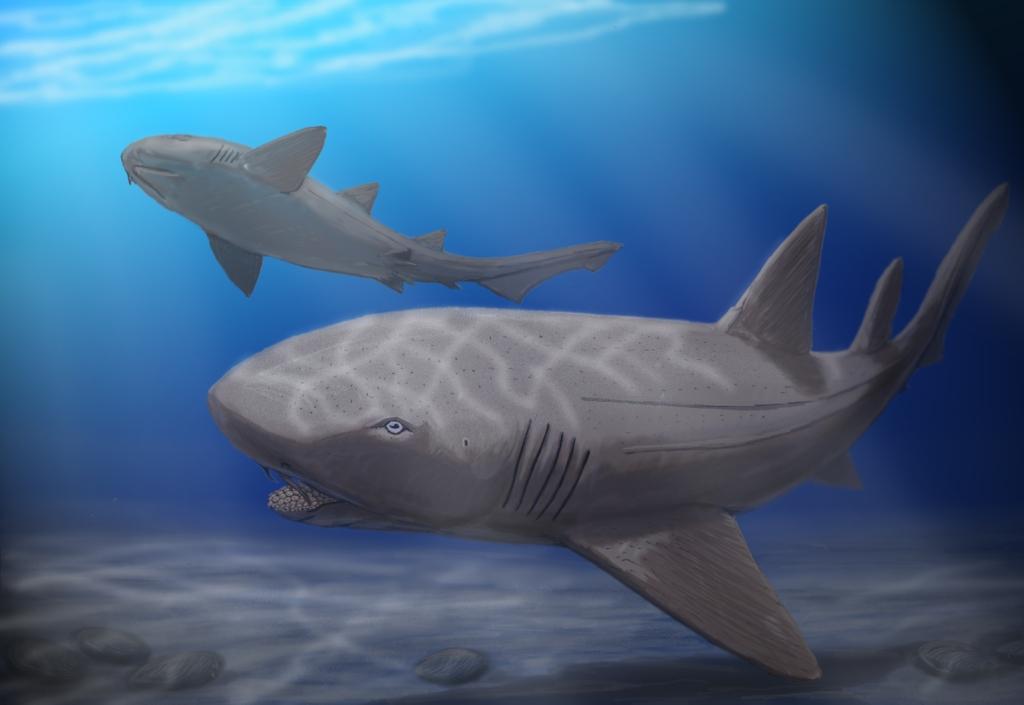 Based on fossilized teeth, scales, and parts of the jaw, the team publishing in the journal Cretaceous Research and led by Kenshu Shimada of DePaul University in Chicago, Illinois, estimate these sharks could have been over 10m in length - longer than two Humvees parked end to end, and larger than the basking sharks that cruise our oceans today.
Based on fossilized teeth, scales, and parts of the jaw, the team publishing in the journal Cretaceous Research and led by Kenshu Shimada of DePaul University in Chicago, Illinois, estimate these sharks could have been over 10m in length - longer than two Humvees parked end to end, and larger than the basking sharks that cruise our oceans today.
The smooth shape of their scales suggests these sharks were not built for speed: fast swimming sharks tend to have more pointed scales that help to improve swimming efficiency by reducing drag.
Their flat, plate-like teeth would have been perfect for crushing hard shellfish.
It's thought these ancient sharks may have looked similar to modern-day nurse sharks that spend most of their time resting on the seafloor - proving that not all sharks need to keep swimming to breathe, a commonly misconception.
Even bigger ptychondontid shark teeth have been found, suggesting closely related species to Ptychodus mortoni could have been even more gigantic, and perhaps were the biggest ever shellfish eaters known on earth.
But just why these sharks were so enormous, at the same time as many other creatures in the sea including clams and other fish, remains an enticing mystery.

10:00 - Invasion of the Alien Star Clusters
Invasion of the Alien Star Clusters
One quarter of the star clusters in our galaxy may, in fact, be aliens, according to a paper in Monthly Notices of the Royal Astronomical Society.
The Halo around our galaxy contains a number of clusters of stars, called Globular Clusters or GCs, which orbit the centre of the galaxy. They tend to be more dense, older and contain more stars than the galactic clusters which form the familiar disc. Astronomers have known for a while that a percentage of these GCs are alien in origin, captured as the Milky Way accreted dwarf galaxies, but estimating what proportion of these GCs are aliens has proven difficult.
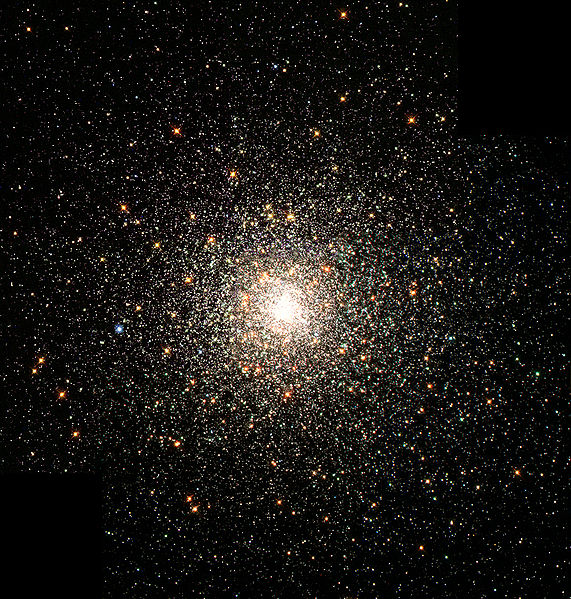 Now, Terry Bridges, an astronomer at Queen's University in Kingston, Canada and Duncan Forbes of Swinburne University of Technology in Australia have used data from the Hubble telescope, among other sources, and compiled the largest ever high quality database recording the age and chemical properties of star clusters, and used this to estimate the proportion of aliens in our galaxy.
Now, Terry Bridges, an astronomer at Queen's University in Kingston, Canada and Duncan Forbes of Swinburne University of Technology in Australia have used data from the Hubble telescope, among other sources, and compiled the largest ever high quality database recording the age and chemical properties of star clusters, and used this to estimate the proportion of aliens in our galaxy.
But how do you spot alien star clusters? There are a few give-aways. Firstly, you can observe how the clusters move - clusters from a dwarf galaxy may retain some of it's momentum after being swallowed by the milky way, and this can present a distinct pattern. The second method is to use the metallicity of the cluster as a measure of its age. Metallicity can simply be thought of as the proportion of elements present that are not hydrogen or helium. Older clusters, or those with less activity, would be expected to have a lower metallicity - this means that the relationship between metallicity and age can be used as a indicator for the history of a particular globular cluster.
Bridges and Forbes discovered two distinct groups - one a fairly constant age of around 12.8 Billion years, and one with a far wider range of ages. This younger strand is likely to consist of dwarf galaxies accreted by our galaxy in the last few billion years, and accounts for hundreds of millions of stars - even as much as 25% of the galaxy.
Astronomers had already confirmed that two dwarf galaxies - Sagittarius and Canis Major - have contributed globular clusters to the Milky Way, and these made up a significant proportion of the 93 clusters studied. However, even once these were removed from the equation there is evidence that the remaining clusters originated from an additional 6 as yet unconfirmed dwarf galaxies.
So as always, space is enigmatic and fascinating, and there's lots more to learn!










Comments
Add a comment